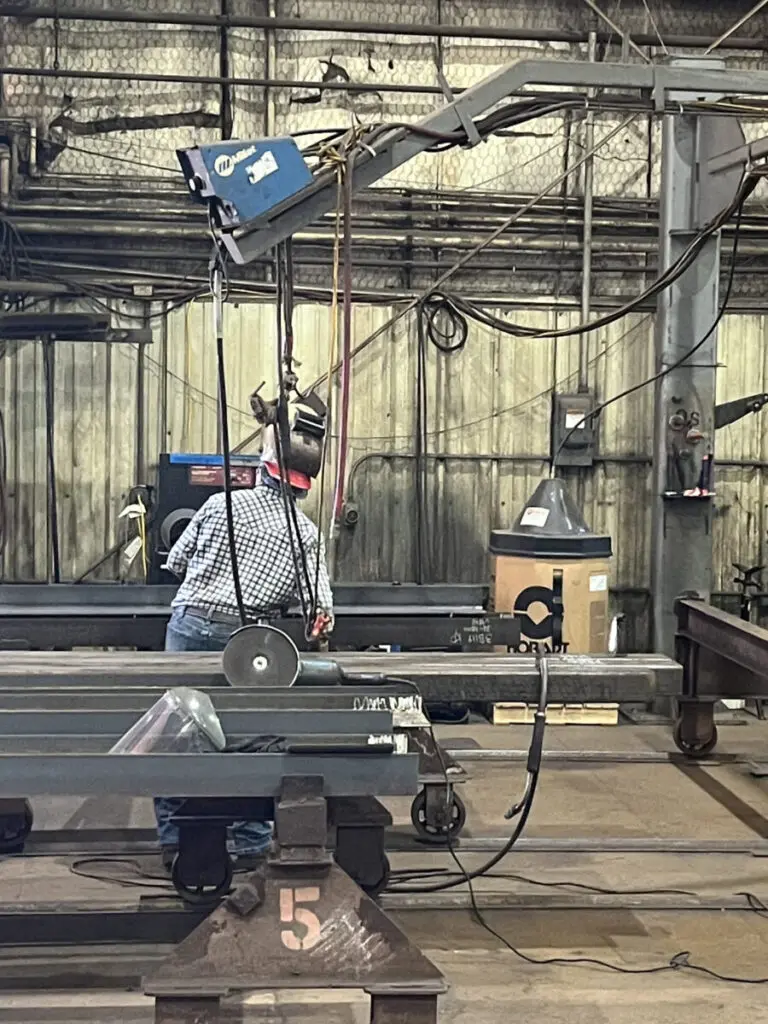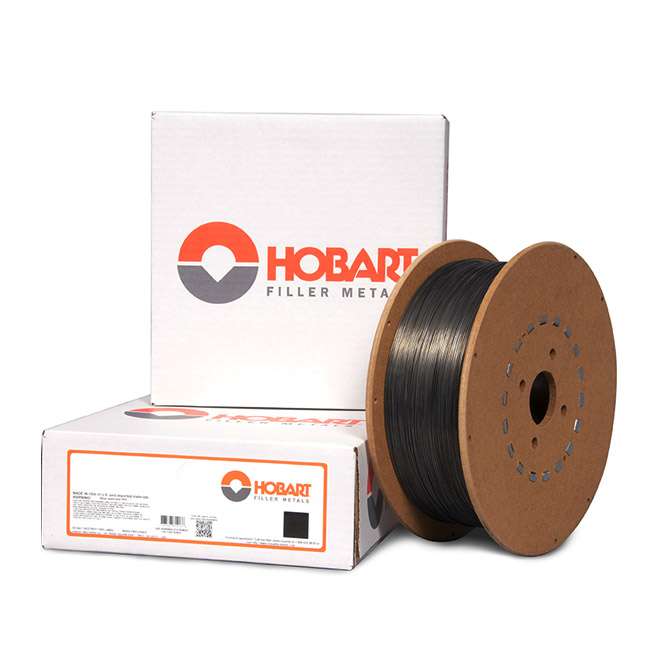How Alamo Saved Big by Switching from a Leading Competitor’s Metal-Cored Wire to Hobart
Alamo Structural Steel, LLC has been a leader in the steel construction industry for over 75 years. Founded in 1946, the company got its start in Waco, Texas, and its fabricated steel is used across Texas to build everything from businesses and stadiums to hospitals and skylines. In 2018, the company went through an acquisition and reached $110 million in annual revenue. With this growth, the Alamo team expanded to employ approximately 130 welders. But what they didn’t know at the time was their choice of metal-cored wire was still leaving efficiency — and money — on the table.
Competitor Metal-Cored Wire Had Challenges
Alamo switched from a leading competitor’s flux-cored wire to their metal-cored wire in 2011 with the goal of improving efficiency through faster travel speeds and higher deposition rates. While the competitor’s metal-cored wire was getting the job done, Casey Chambers, Vice President of Alamo Structural Steel, was starting to realize that there were some issues that slowed the team down and led to increased time spent on post-weld cleanup — specifically excessive spatter and lower wire feed speed.
Like many businesses, though, Alamo was busy, and Casey didn’t know what a better option would be. Plus, he knew that identifying an alternative would take time and resources away from getting work out the door — and come with some risk that the juice might not be worth the squeeze.

Upgrading Wire Promises Increased Productivity
Then one day, Alamo got a call from Hobart Filler Metals. Never having worked with Hobart or its product team before, Casey was cautiously optimistic when he started to hear about an alternative metal-cored wire that could boost his team’s productivity. After discussing Alamo’s operations and challenges, Hobart brought in a designated productivity improvement team who put together a high-level picture of what was going on inside of the facility. The analysis took place over several days, and the productivity team found that, despite their upgrade to metal-cored wire, there was more upside they could find with a different metal-cored wire.
Hobart then presented Alamo with a simple, data-backed change — switch to FabCOR® Elevate™ because the wire has significantly higher deposition rates and requires less heat than the competitor’s metal-cored wire. The impact of this change projected:
- Total cycle time reduction of 37.19%, leading to significant labor savings
- No change to total metal required to produce the same weld
- Reduced total heat input by 36.64%, resulting in savings in the form of electricity costs
The overall cost savings Hobart proposed came out to a potential $158,000 annually. Adopting Elevate filler metal, adding several Deltaweld® 500 welding machines and using new wire feeders would speed up the welding process and require less power to accomplish the same welds. The filler metal would have higher deposition rates, provide a more balanced arc and be more forgiving on less than perfectly clean surfaces. It would also minimize a major time-consumer for the Alamo team — post-weld cleanup. On top of all of this, the Deltaweld’s EZ Set™ technology would assist every operator in setting accurate parameters, further reducing spatter.
“The numbers were very surprising and unexpected, and I quickly realized it was a bad decision not to do it,” said Casey.

A Supported Transition Delivers Results
Transitioning over 100 operators across two facilities doesn’t come without a learning curve. Some had been welding with the old wire and were reluctant to change. With support from the Hobart productivity team, Alamo created a training plan for welders, supervisors and managers to support the shift.
The Hobart team’s on-the-ground work with Alamo resulted in greater buy-in and implementation at all levels. Casey and the Alamo team rely on Hobart to assist in overcoming challenges that many longtime welders might face when switching to a new filler metal or machine. New arc characteristics, different parameters, even muscle memory can pose challenges. For Alamo, they were thankful to have the Hobart team right alongside them.
“One thing I like is that they (Hobart Filler Metals and Miller) don’t go away,” said Casey. “They don’t sell you something and disappear. They offer support, pop in and come to the facilities to help with gun types, whip sizes, lengths, anything we need. They’re very hands-on throughout — and after — the process.”
Measurable Results Lead to Increased Profitability
Today, Elevate is used by the majority of Alamo’s team, and they continue to improve as they work with Hobart to optimize their operation. The initial projected results from switching to Elevate were actualized too, resulting in significant time and cost savings.
Casey and his team have saved over $100,000 and experienced the following benefits:
- 20% improvement in deposition rates
- Post-weld cleanup time decreased significantly
- Accurate weld sizing reduced material waste
- Shorter cycle time, allowing for welder time to be used elsewhere
“Initially I was reluctant to change, but once you start seeing the data, it makes sense,” said Casey.
Unlocking Efficiency
The results speak for themselves. Through leadership embracing change and working with Hobart in the transition, efficiencies were born that Alamo didn’t realize they could achieve. Hobart continues to collaborate closely with Alamo to ensure operations run smoothly. Now Alamo can focus on achieving shorter project deadlines while saving money across their business.




Leave a Reply